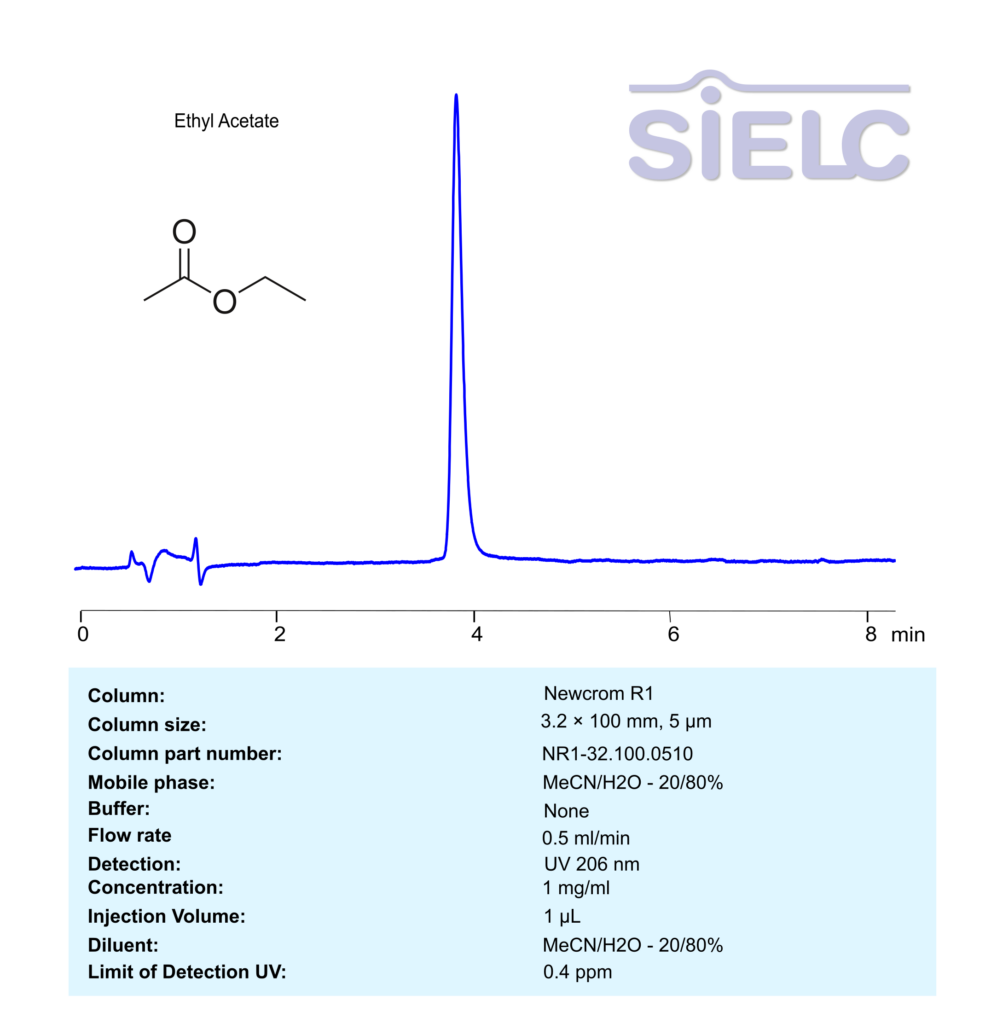High Performance Liquid Chromatography (HPLC) MS Method for Analysis of Ethyl acetate on Newcrom R1 by SIELC Technologies
Separation type:Liquid Chromatography Reverse Phase SIELC Technologies

High Performance Liquid Chromatography (HPLC) Method for Analysis of Ethyl acetate
Ethyl acetate (C₄H₈O₂) is a chemical compound classified as an ester. It is produced by the reaction of ethanol and acetic acid (known as esterification). Ethyl acetate is commonly used as a solvent in various applications such as chromatography, paints, coatings, adhesives, and in the production of synthetic fruit essences and flavors.
It is widely utilized in analytical chemistry and extraction processes due to its good solvency for a variety of compounds.
Ethyl acetate can be retained, separated and analyzed using a Newcrom R1 column. The analysis employs an isocratic method with a simple mobile phase comprising water and acetonitrile (MeCN). This method allows for detection using Vis 200 nm.
You can find detailed UV spectra of Ethyl acetate and information about its various lambda maxima by visiting the following link.
| Column | Newcrom R1, 3.2 x 100 mm, 5 µm, 100 A, dual ended |
| Mobile Phase | MeCN/H2O- 20/80% |
| Buffer | None |
| Flow Rate | 0.5 ml/min |
| Detection | UV 206 nm |
| Sample | 1 mg/ml |
| Diluent | MeCN/H2O- 20/80% |
| LOD | 0.4 ppm |
| Class of Compounds | Ester |
| Analyzing Compounds | Ethyl acetate |
Application Column
Newcrom R1
Column Diameter: 3.2 mm
Column Length: 100 mm
Particle Size: 5 µm
Pore Size: 100 A
Column options: dual ended





